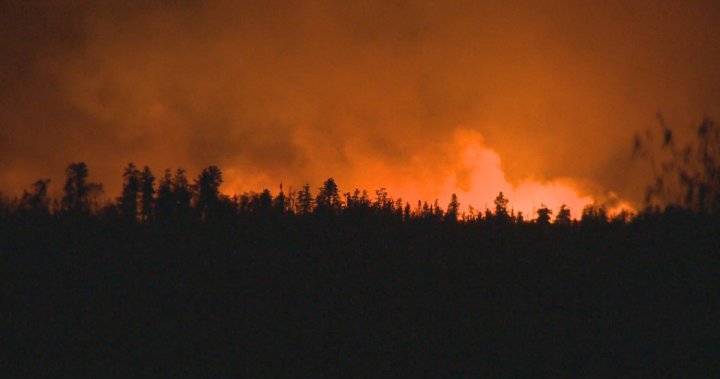Manitoba wildfire officials are bracing for what could be a record-breaking wildfire season due to tinder-dry conditions in the province. Earl Simmons, acting wildfire director of the Manitoba Wildfire Service, expressed concern over the lack of moisture in the ground in the western part of the province, particularly in areas north of Swan River. The drought codes are significantly higher than in previous years, heightening the risk of wildfires. The province is preparing by ensuring fire crews and water bombers are ready and by training community members in firefighting, especially in Indigenous communities.
The Manitoba Wildfire Service reported that the last above-average wildfire season in Manitoba was in 2021, with 465 wildfires burning over 1.2 million acres. This year is starting off with even worse drought codes than in 2021. Simmons emphasized the importance of being vigilant and cautious to prevent human-caused wildfires, as seen in the recent fire in Cranberry Portage. Federal Minister of Emergency Preparedness Harjit Sajjan also expressed concern about the potential for an intense wildfire season nationwide due to heat and dryness.
John Gradek, a faculty lecturer at McGill University, highlighted the need for increased investment in fire prevention and mitigation strategies in fire-prone communities. He mentioned that in previous years, efforts focused on protecting human establishments and infrastructure rather than fighting every forest fire. Jim Mandeville from First Onsite Property Restoration emphasized proactive measures property owners in wildfire-prone areas can take to protect their homes, such as keeping eavestroughs clean, pruning trees, and avoiding flammable landscaping materials. Mandeville stressed the importance of incorporating fire-resistant building materials and practices into provincial fire codes to enhance community safety.
The wildfire outlook for 2024 nationwide is worrisome, with experts predicting an early and potentially explosive season due to extreme heat and dry conditions. Fire officials are urging residents to be cautious and take preventive measures to reduce the risk of wildfires. Strategies include working closely with Indigenous communities to train firefighters and preparing firefighting resources in advance. Mandeville emphasized the importance of using fire-resistant building materials and landscaping practices in fire-prone areas.
With the increasing threat of wildfires, experts are calling for more investment in fire prevention and mitigation efforts. Gradek suggested a strategy that prioritizes protecting human establishments and infrastructure in fire-prone areas. Mandeville stressed the importance of proactively safeguarding properties in wildfire-prone regions, such as keeping eavestroughs clean and avoiding flammable landscaping materials. He advocated for incorporating fire-resistant building materials and practices into provincial fire codes to enhance community safety.
As the risk of wildfires continues to grow, officials are ramping up their preparations for what could be a challenging wildfire season. With drought codes at concerning levels and dry conditions persisting, the potential for devastating wildfires is high. By working with communities, training firefighters, and promoting fire-resistant building materials and practices, authorities hope to reduce the risk and impact of wildfires. As the season progresses, vigilance and caution will be essential to protect lives, property, and natural resources from the threat of wildfires.


